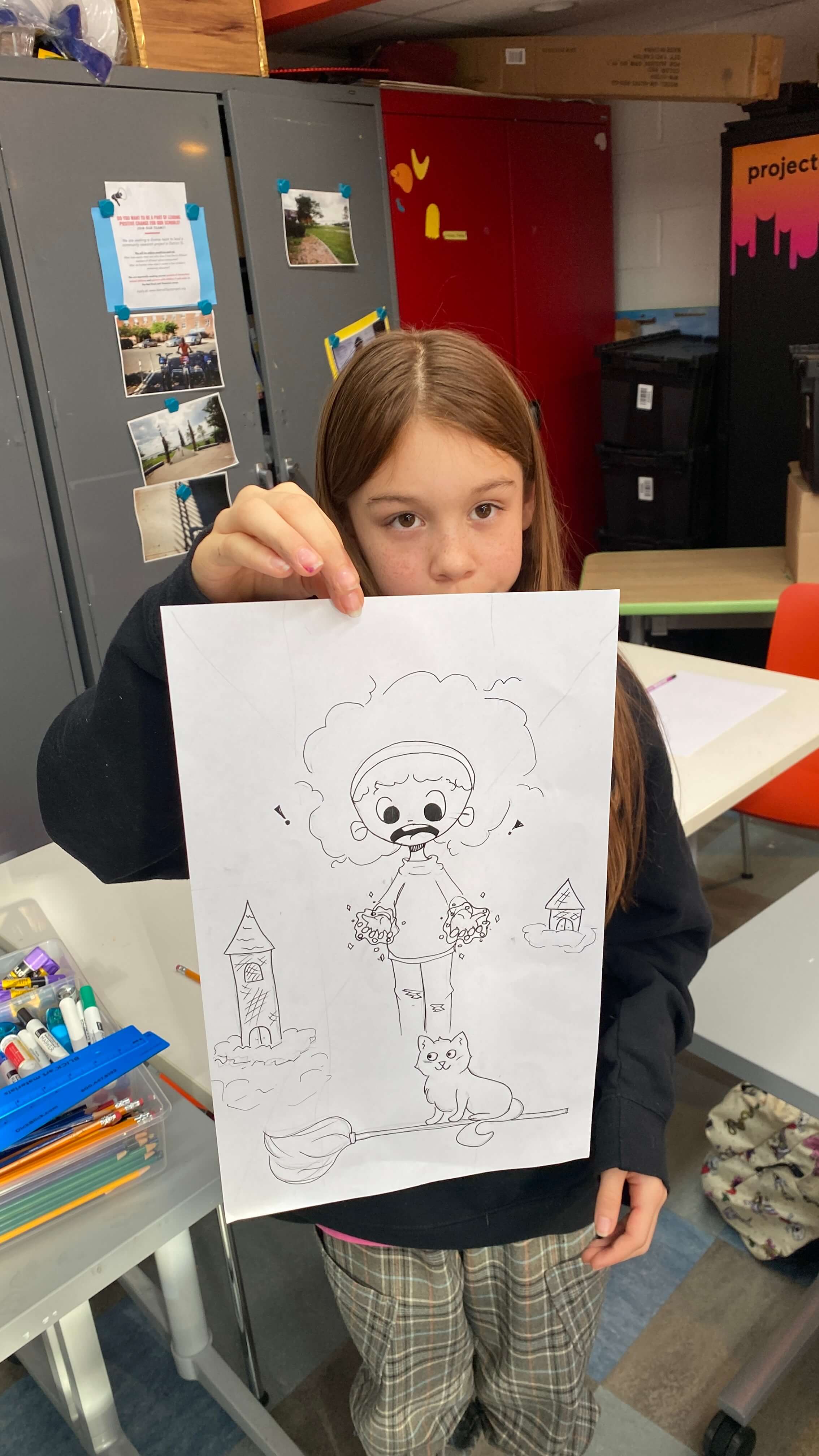There has comics and cartoons class for kids at the Red Hook Library for kids who want to learn about the art form and have a new skill to learn and enhance. It is planned the the class will continue somewhere else now that the library is closed for construction.
Nicholas Forker teaches the class and thinks this is a great way to teach them some of the fundamental of drawing and composition. Forker, who has been passionate about comics ever since he can remember, teaches on Mondays from 3 to 4:30 pm.
“I like to teach here at the library because it is free and open to the public,” Forker said. “That means it is accessible to everyone no matter what walk of life. Any kid can come in here and learn at the library, that is why I like it.”
The Red Hook Library will be closing on March 17, for about 18 months. There will be a comprehensive interior and exterior renovation that will protect it from future flooding.
Once the renovation begins, the class will move to Pioneer Works. The time and day is not known yet.
“I like teaching kids,” Forker said. “It is a very fulfilling job. As an artist, it is really fulfilling to share the skills that I have learned. It is an opportunity to give back and continue the tradition of artists teaching up and coming artists.”
He has been teaching for about 10 years and has been a tutor in Manhattan and Brooklyn. He was originally a chess teacher.
At his Red Hook class there are a couple kids younger than 10 but he tries to keep it to 10 and older.
“They have enough of the ability and motor skills to be able to draw representative work and things that are forms,” Forker said. “If they are much younger they might get discouraged.”
When I went to observe on February 13 there were seven in the class.
“We worked on comic book covers specifically focusing on using elements of hand lettering and bold striking graphic imagery,” Forker said. “We worked on lettering and focused mostly on composition of how to compose a striking cover. We learned about the rule of thirds using geometry in our drawing and how to use angles to make for an exciting cover image.”
“I make sure I have something for the person who is just joining me for their first class and things that are related to previous lessons for regular students.” Forker said.
He taught at the library before the pandemic and has many of the same kids from that class again.
“I just came in saying we had such a great experience pre-pandemic, let’s offer another class to the kids,” Forker said. “They were excited about it so we started it just to see how it would go at first, and I think we have a pretty successful program.”
Forker comes from a fine art background and started out pursuing gallery shows but started to realize that he didn’t care for the fine art subculture, so he transitioned to comics.
He appreciates that comic books is a working class medium and is affordable to everyone.
“It was interesting to me because visual narrative and storytelling has its own language,” Forker said. “It was a language that I was not well versed with, even though I loved comics and cartoons. So, I went about teaching myself that.”
He is mostly self taught but he has taken classes to improve his knowledge. He attended School of Visual Arts in Manhattan and Pratt in Brooklyn.
He is tutoring and also teaching comics and graphic novels on Thursdays at the 92nd Street Y.
He self published one comic book every month last year from February to November, a total of 10 books. Before that, the artist self published 10-15 other books.
His comics over the years have been philosophical and introspective. They have explored the super-ego, the world around him and the shared construct of “reality.”
“This year I am preparing a new book that I am going to bring to market through more conventional channels like book agent and publisher,” Forker said.
The topic of the kids’ comics not surprisingly differs from Forker’s. They write auto-bio comics and more specifically create off-beat superheroes and humorous drawings of exchanges with their families and or their pets.
Forker enjoyed comics from a young age. The Adventures of Tin Tin and the Adventures of Asterix were two comics that got him hooked.
He also read Peanuts, Marvel and his bedtime story as a child was The Hobbit.
“There was some early Hobbit art by Ralph Bakshi that was intriguing to me, and I always loved the art from the early Dungeons and Dragons,” Forker said.
Calvin and Hobbes was also a favorite. Forker admired that artist Bill Watterson never merchandised the comics like Garfield and the Simpsons did. He liked his integrity.
“He did not merchandise and I am proud of him for that,” Forker said. “He is gifted. His ink and water color is fantastic.”










One Comment
Pingback: Learning about cartooning at the library, by Nathan Weiser – Red Hook Star-Revue – Art Review Web